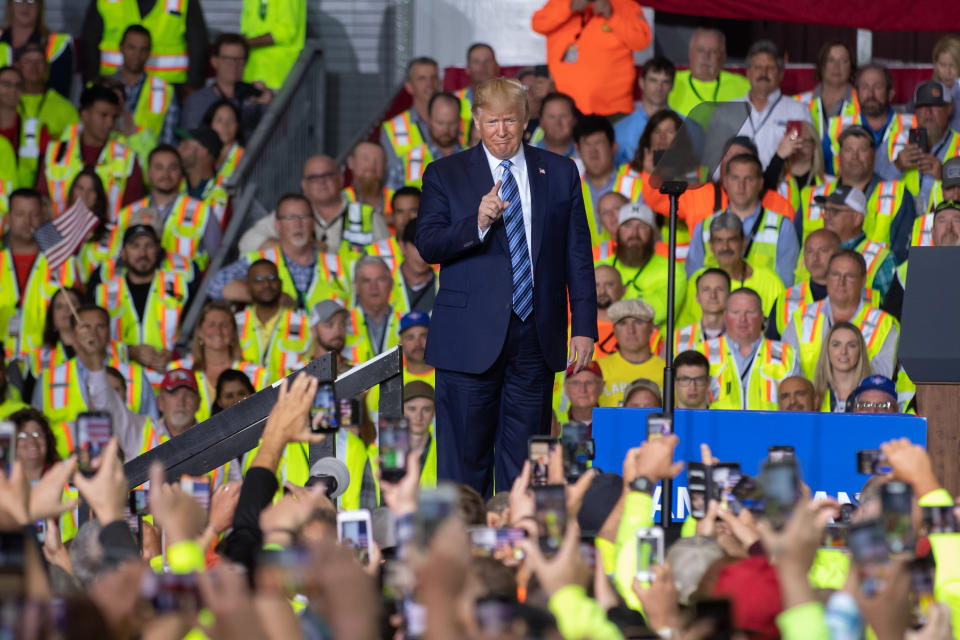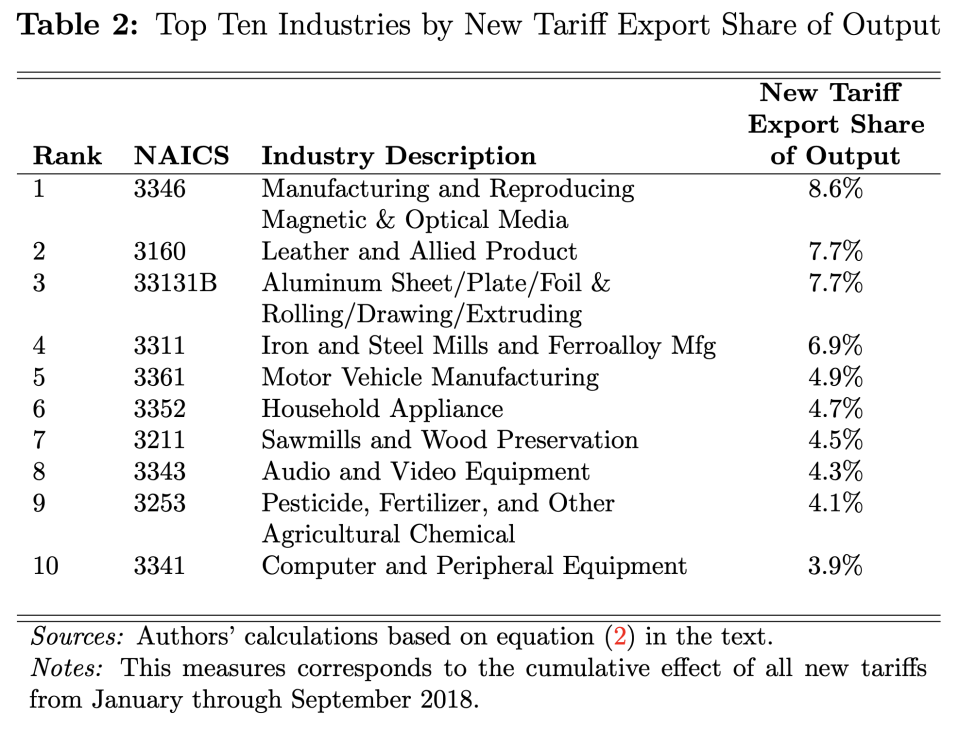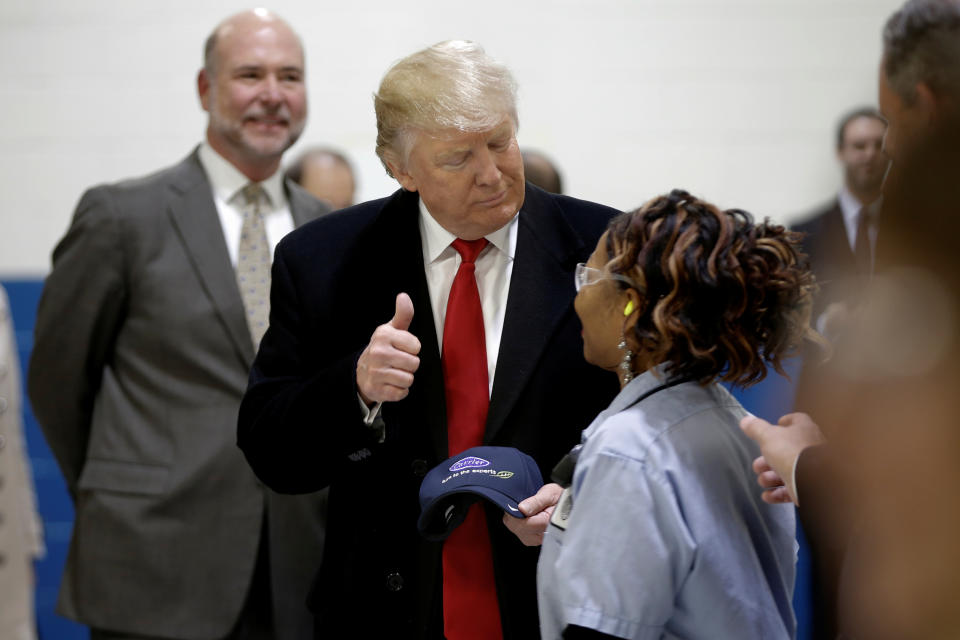Trump's tariffs are backfiring on the U.S., Fed finds
A new study from the Federal Reserve found that President Trump’s tariffs are backfiring.
According to the Fed study, the tariffs that went into effect in 2018 have led to not only higher producer prices but also a loss of jobs across the U.S. — particularly in manufacturing. A previous analysis also found that tariffs have cost the U.S. $42 billion so far.
“In terms of manufacturing employment, rising input costs and retaliatory tariffs each contribute to the negative relationship, and the contribution from these channels more than offsets a small positive effect from import protection,” the new Fed study stated. “For producer prices, the relative increases associated with tariffs are due solely to the rising input cost channel. We find little evidence for a relationship between industrial production and any of the three tariff channels considered.”

‘You cannot simply raise tariffs’
Back in December 2018, Trump tweeted: “Almost 500,000 Manufacturing Jobs created since I won the Election. Remember when my opponents were saying that we couldn’t create this type of job anymore. Wrong, in fact these are among our best and most important jobs!”
However, the tit-for-tat tariffs between the U.S. and China have thrown a wrench in his plans to revitalize the manufacturing sector.
“While the longer-term effects of the tariffs may differ from those that we estimate here, the results indicate that the tariffs, thus far, have not led to increased activity in the U.S. manufacturing sector,” the Fed study stated.
According to the study, the industries hardest hit by the retaliatory tariffs from China include producers of aluminum sheet, iron and steel, motor vehicles, household appliances, and computer and other electronic equipment.

Doug Barry, senior director of communications and publications for the U.S.-China Business Council (USCBC), told Yahoo Finance that the findings came as no surprise.
“They reflect what we have been hearing anecdotally for quite some time,” he said. “As the report authors note, in an era of globally interconnected supply chains, you cannot simply raise tariffs on imports to protect domestic manufacturing because a lot of those imports are actually intermediate goods that domestic manufacturers need.”
The Fed study noted this as well and highlighted that the retaliatory tariffs from U.S. trading partners offset any positive gains that came from reduced competition.
“These retaliatory tariffs may harm U.S. manufacturers by decreasing their competitiveness in foreign markets,” the Fed study said.
According to the USCBC, exports to China support over 1.1 million American jobs. Factory workers have particularly bearing the brunt of the retaliatory tariffs from China — the October 2019 job report highlighted the contraction in total factory payrolls, “which not only increases price for companies but also causes investment uncertainty,” according to Bloomberg.
‘The consequences will be very bad’

Chris Rupkey, chief financial economist at MUFG, mostly shrugged off the Fed study findings, saying that it looks “increasingly like the U.S.-China trade war was all smoke and no fire.” However, he did note one issue that is still at play.
“The biggest risk to the economy is the uncertainty caused by the confusion about how long the trade war might last,” he told Yahoo Finance. “Companies don’t tend to undertake new projects or expand their businesses during uncertain times and so investment spending that drives GDP can suffer.”
The Tax Foundation estimated that the U.S. tariffs that have been imposed so far could cause GDP to shrink by 0.26% over the long term. But for now, “the coast is clear,” Rupkey said, because of the phase one trade deal.
“The major hit to the economy was going to take place if the Trump administration went all in with 30% tariffs on $540 billion of goods that America imported from China in 2018,” he said. “That tariff tax would have braked economic growth hard from a 2% forecast in 2020 to just 1.1 or 1.2%.”
Despite the first step towards a trade resolution, Barry is firm in his stance that trade relations between the U.S. and China need to resume for the good of the American economy.
“People who advocate decoupling the U.S. and China economies should realize that the consequences will be very bad for U.S. businesses and workers,” Barry said.
Correction: This post has been updated to more accurately reflect analysis from by the Tax Foundation.
Adriana is an associate editor for Yahoo Finance. She can be reached at [email protected]. Follow her on Twitter @adrianambells.
READ MORE:
Trade war damage is 'more significant than most Americans ever realized'
Trade war: New analysis updates staggering amount Americans pay for Trump's tariffs
There's a much bigger issue playing out in the background of the U.S.-China trade war
Read the latest financial and business news from Yahoo Finance
Follow Yahoo Finance on Twitter, Facebook, Instagram, Flipboard, SmartNews, LinkedIn, YouTube, and reddit.
